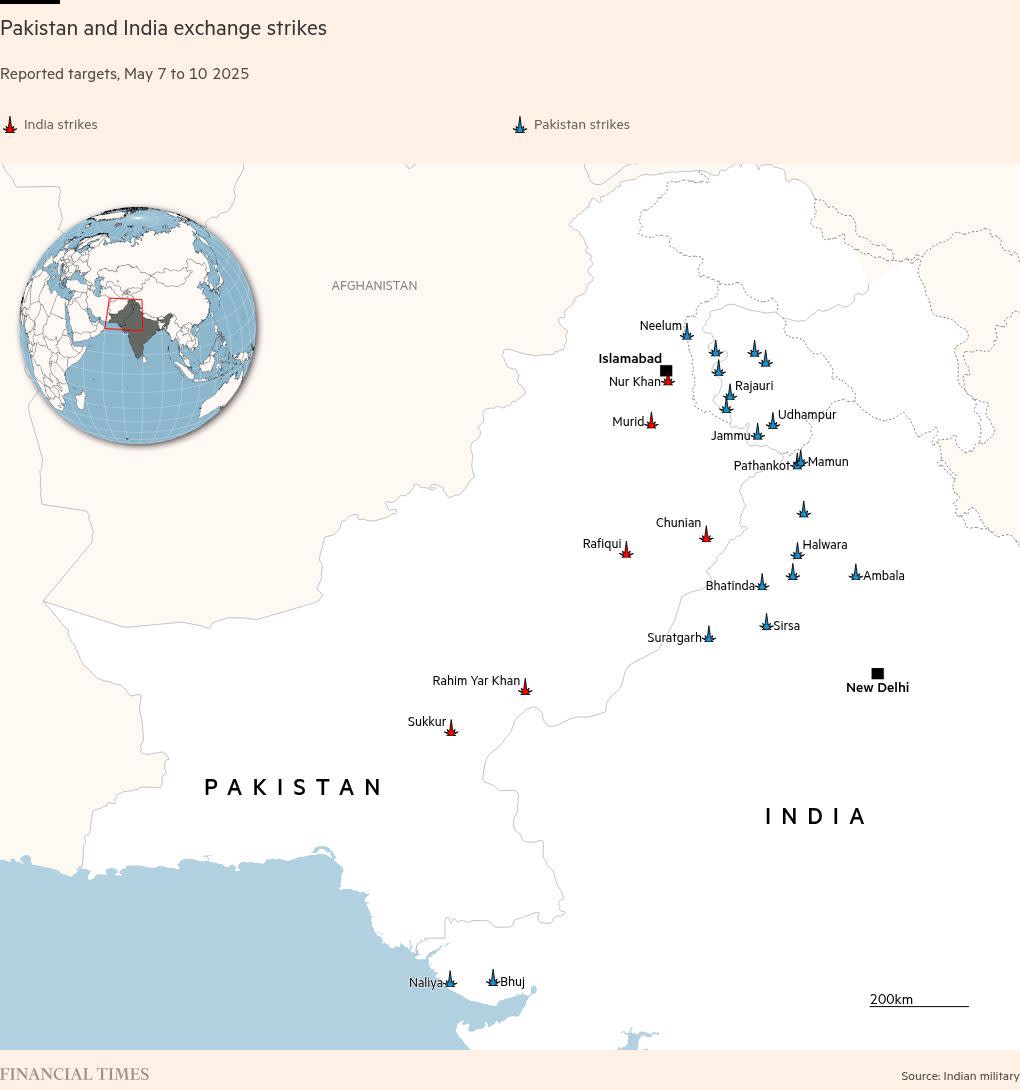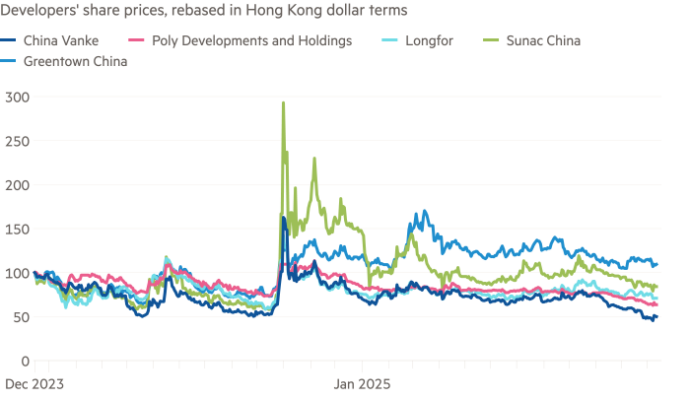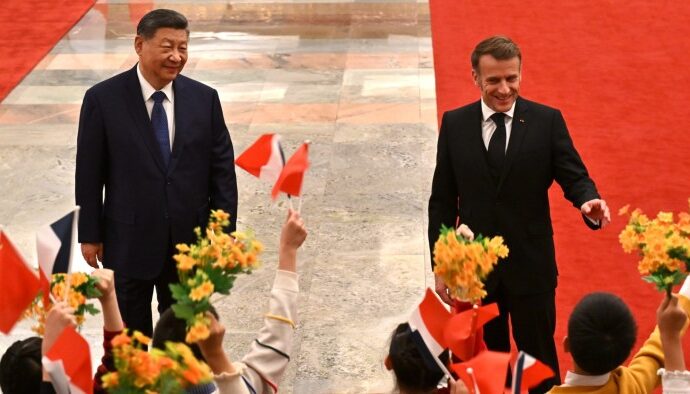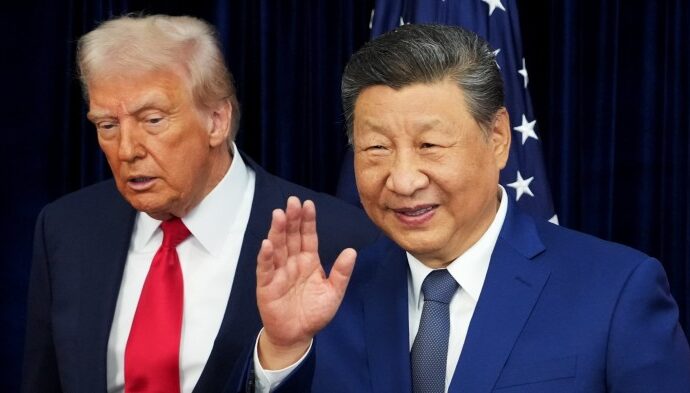India and Pakistan are both claiming victory in the short, sharp confrontation that brought the nuclear-armed neighbours to the brink of war — but analysts say the US intervention that led to a ceasefire gave Islamabad the diplomatic upper hand.
By using missiles to strike air bases and alleged “terrorist infrastructure” deep inside Pakistan, Indian officials said they established a deterrent to any involvement by Islamabad in cross-border terrorism.
Pakistan, which claims to have shot down five Indian fighters last week, insists it scored a “historic victory” over its larger rival in the conflict. In a first, both sides sent drones deep into each other’s cities.
“India will feel vindicated in its belief that there is more room than previously thought to trade barbs under the nuclear shadow,” said Ankit Panda, a senior fellow at the Carnegie Endowment for International Peace in Washington. “Pakistan’s military will be content with its retaliation and walk away with a sense that deterrence was reestablished.”
India says at least 16 of its civilians and five soldiers were killed. Pakistan says at least 33 civilians had died since Wednesday, as well as one soldier. India has claimed that as many as 40 Pakistani military personnel were killed.
However, analysts said that while both countries had delivered heavy blows, Washington’s diplomatic intervention to avert full-scale war had rankled India, bracketed the world’s largest democracy and fifth-biggest economy with what it sees as a terrorism-backing rogue state.
US President Donald Trump, who saluted both sides for their “unwavering powerful leadership” to stop fighting, also asserted that “a solution can be arrived at concerning Kashmir”, the disputed Muslim-majority region at the heart of the conflict.
Both countries claim the territory, over which they have fought three wars, in its entirety, but New Delhi opposes any international mediation. India’s foreign ministry denied it had any plans to enter talks.
Pakistani diplomats celebrated Trump’s “willingness to support efforts aimed at the resolution” over Jammu and Kashmir, the Indian-controlled part of the region.
Shyam Saran, a former Indian foreign secretary, said the episode was a setback for New Delhi’s efforts to deter countries from treating it and Pakistan as on a par, and relations with each as interlinked.
“Over the last several years we had managed to de-hyphenate India and Pakistan and not to be seen as the bad twins constantly fighting with each other,” Saran said. “That hyphenation is now back, whether you like it or not.”
The Indian National Congress, the country’s biggest opposition party, has also demanded Prime Minister Narendra Modi explain why Trump was first to announce the ceasefire over the weekend and disclose details of its terms.
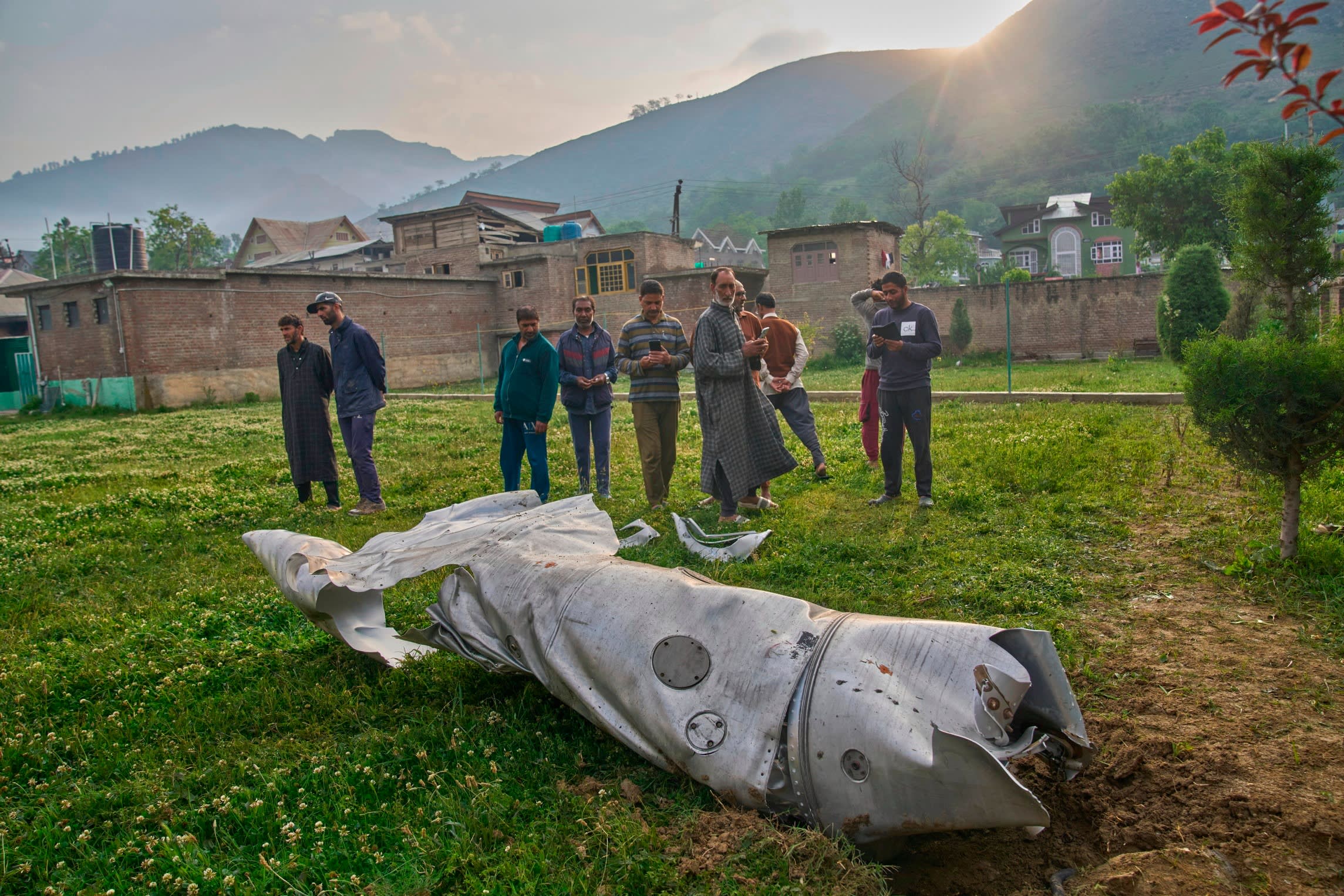
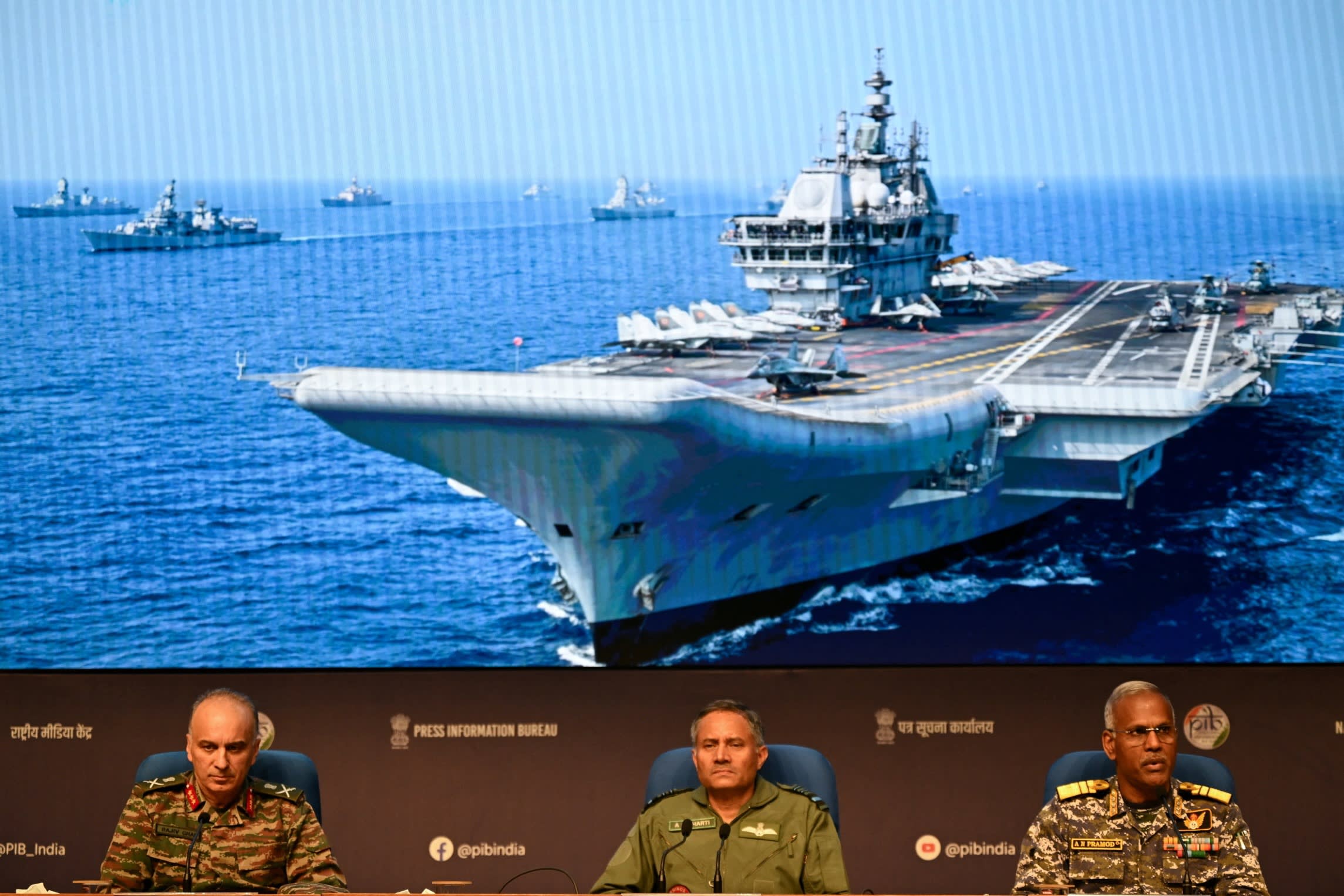
New Delhi is locked in talks with Washington that it hopes will avert a 26 per cent tariff on Indian goods. Trump claimed on Monday to have used trade to pressure both India and Pakistan to back down.
“I said: ‘C’mon, we are going to do a lot of trade with you guys, let’s stop it . . . If you don’t stop it, we’re not going to do any trade,’” Trump said.
An Indian external affairs ministry official who declined to be named insisted “there was no reference to trade” in discussions of the conflict over the weekend between New Delhi and Washington.
In a triumphant televised address on Monday, Modi stressed instead what he called India’s military success.
The assault included using missiles to strike air bases and what India said was “terrorist infrastructure” far beyond the traditional war theatre of Kashmir. Targets included the Noor Khan air base, near the nerve centre of Pakistan’s nuclear arsenal.
Modi said Indian had “only suspended” operations and would “strike precisely and decisively at the terrorist hide-outs developing under the cover of nuclear blackmail”. He also asserted that major global terror attacks had originated from what he called “universities of global terrorism” in Pakistan.
